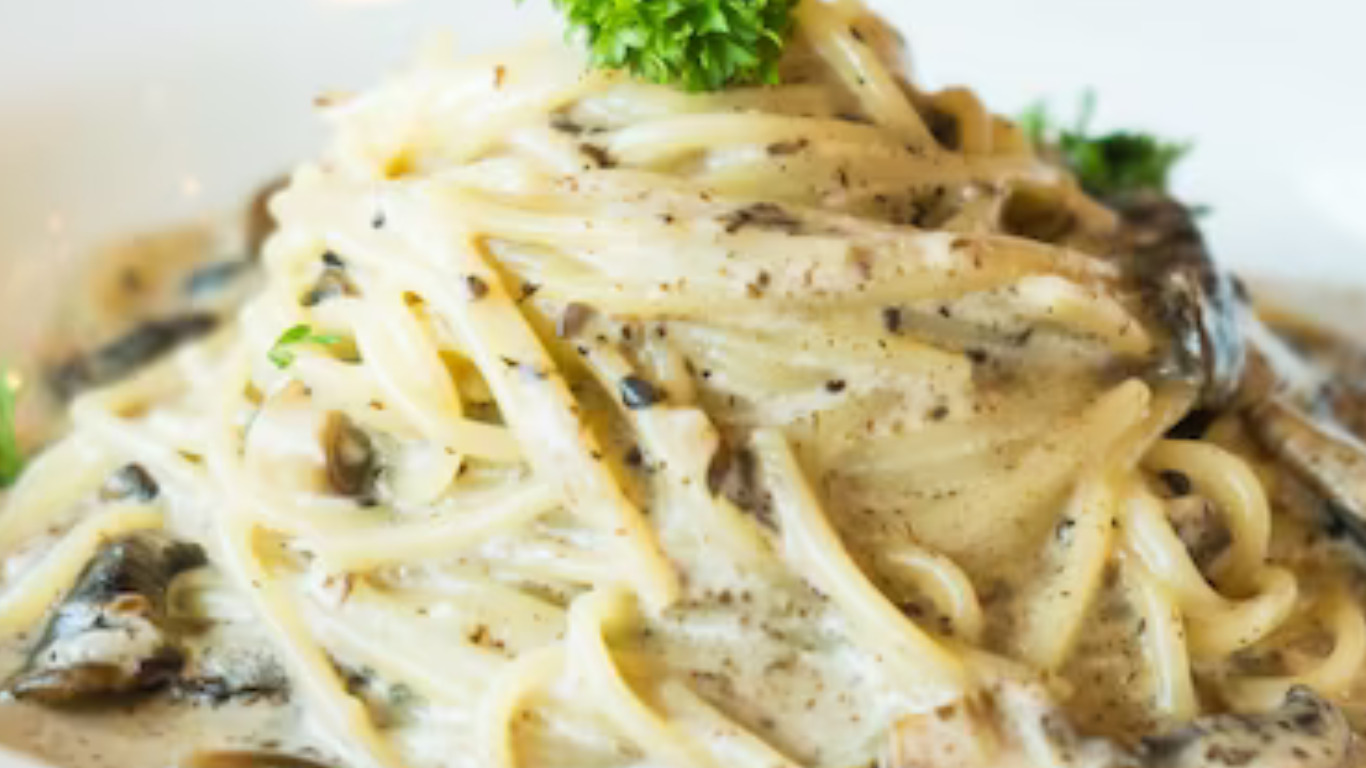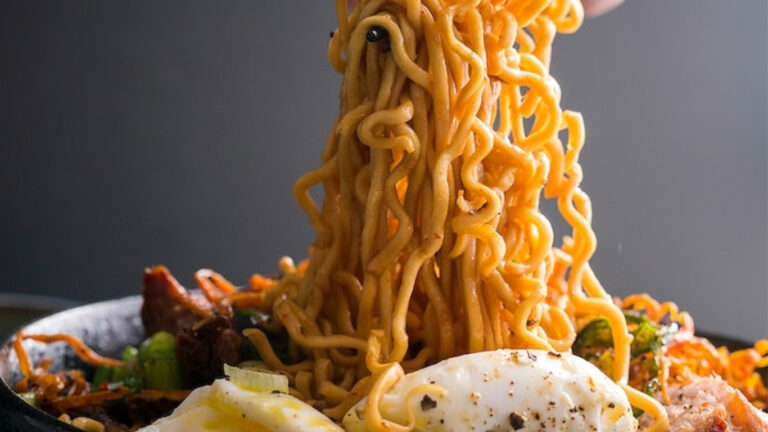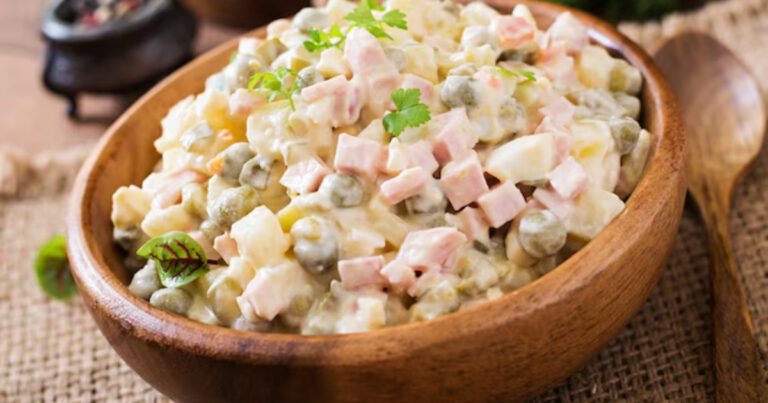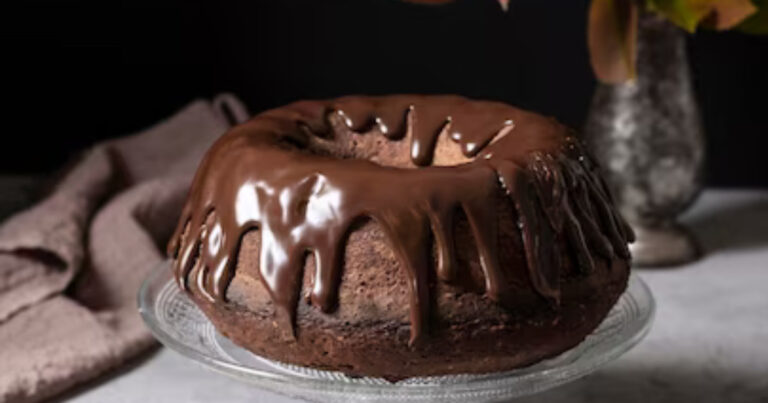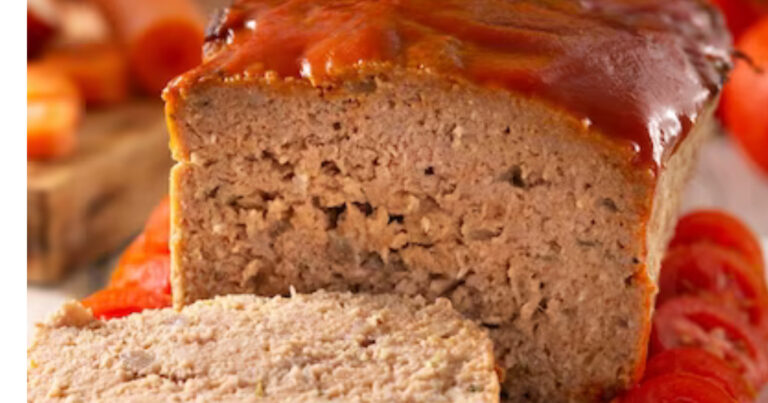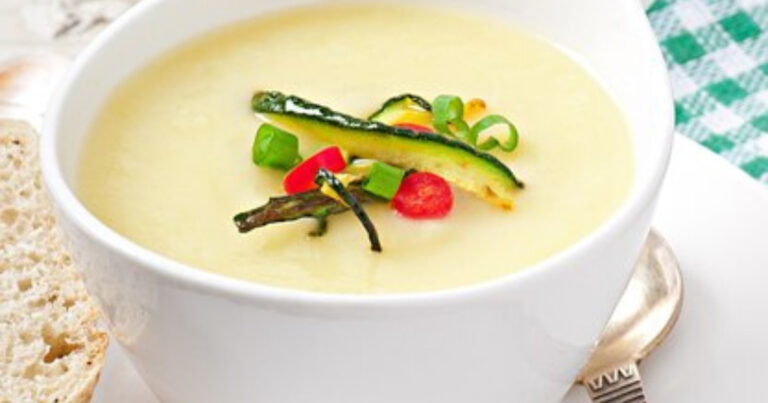Roscioli Roman Cacio e Pepe recipe
In case you want to strive for some things that might be smooth to cook dinner and attractive you then must attempt the Roscioli Roman Cacio e Pepe recipe. In the coronary heart of Rome, in which records and gastronomy converge, there exists a culinary gem that transcends the regular, shooting the essence of Italian lifestyle in every delectable bite – the Roscioli Roman Cacio e Pepe recipe.
This iconic dish, renowned for its simplicity and intensity of flavor, reflects the time-venerated artistry of Roman cuisine. In this newsletter, we delve deep into the coronary heart of Roscioli’s culinary legacy, unraveling the secrets and techniques of crafting the correct Roman Cacio e Pepe. From exploring the records of the iconic bakery to understanding the meticulous steps in the back of the training of this liked dish,
What is the roscioli roman cacio e pepe recipe?
The Roscioli Roman Cacio e Pepe is a renowned and celebrated dish presented with the aid of Roscioli, a historic bakery and eating place located within the heart of Rome, Italy. Roscioli is thought for its dedication to maintaining traditional Roman culinary heritage, and their model of Cacio e Pepe has turned out to be an iconic representation of this dedication.
Cacio e Pepe, translated as “cheese and pepper,” is a classic Roman pasta dish recognised for its simplicity and tremendous flavor. The Roscioli interpretation of this dish entails meticulous attention to detail and using exceptional ingredients.The pasta is cooked to al dente perfection, and the sauce is created by using emulsifying Pecorino Romano with a mixture of pasta water, black pepper, and olive oil.
What Does It Taste Like?
The Roscioli Roman Cacio e Pepe is a culinary masterpiece that unfolds at the palate with a harmonious blend of wealthy, creamy, and savory notes. The dish envelops every flawlessly al dente strand of pasta in a velvety sauce created through the meticulous emulsification of Pecorino Romano with pasta water. The cheese, famed for its salty and sharp individual, imparts a robust savory flavor that is delicately balanced in opposition to the backdrop of the neutral pasta. The coarsely ground black pepper, toasted to intensify its aromatic essence, affords a formidable and peppery kick that cuts through the creaminess, developing a symphony of taste.
How Did I First Introduce Roscioli roman cacio e pepe recipe?
I first delivered the Roscioli Roman Cacio e Pepe Recipe through expressing a hobby in studying more approximately this iconic Roman dish. My preliminary request sought an in-depth advent for an editorial centered on the recipe, indicating a curiosity about the origins, instruction strategies, and cultural significance of the Roscioli Roman Cacio e Pepe. Subsequently, I inquired about the recipe itself, looking for each the ingredients and commands to recreate this traditional dish recognised for its simplicity and rich flavors. The exploration then multiplied to encompass questions on the taste profile of the dish, inviting an in depth description of the sensory experience it offers. Throughout these interactions, my engagement proved a real enthusiasm for delving into the culinary historical past of Roscioli and experiencing the specific flavors of Roman delicacies.
How To Make Roscioli roman cacio e pepe recipe?
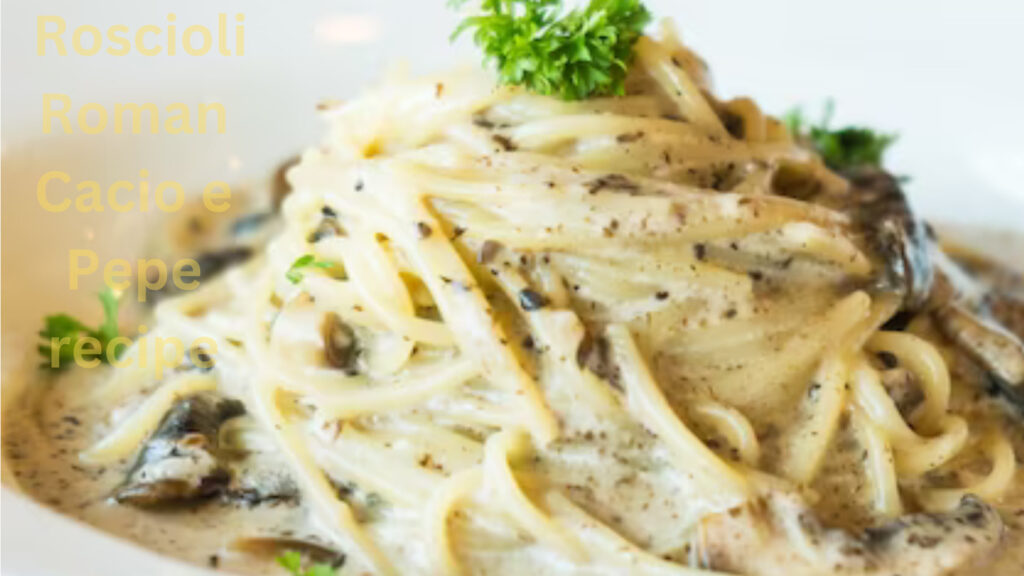
Ingredients
- 400g (14 ounces) of pasta
- 200g (7 ounces) of Pecorino Romano cheese, freshly grated
- 1-2 tablespoons of coarsely floor black pepper
- Extra-virgin olive oil
- Salt (for pasta water)
Equipment needed for roscioli roman cacio e pepe recipe
Large Pot
For boiling the pasta. Ensure it is large enough to allow the pasta to cook evenly.
Skillet or Pan
A big skillet or pan for toasting the black pepper and combining the pasta with the sauce.
Tongs or Pasta Fork
Essential for tossing the pasta in the sauce. Tongs provide an amazing grip and allow for even coating.
Grater
Use a cheese grater for freshly grating the Pecorino Romano. Grating just earlier than used complements the cheese’s taste.
Measuring Spoons
For measuring the coarsely ground black pepper and every other seasoning.
Colander
To drain the cooked pasta.
Pasta Water Ladle or Cup
Reserve some pasta water using a ladle or cup before draining. You’ll use this to create the creamy sauce.
Olive Oil Infuser or Garlic Press
If you choose to infuse olive oil with garlic or herbs, an infuser or garlic press may be available.
Step-by-Step instructions for roscioli roman cacio e pepe recipe
Step 1
Take a large bowl of salted water to a boil.
Cook the pasta in keeping with the bundle instructions until al dente.
Step 2
While the pasta is cooking, warm a drizzle of olive oil in a massive skillet over medium heat.
Add the coarsely ground black pepper to the skillet and toast it briefly. Be cautious no longer to burn the pepper; it ought to release its aroma without turning bitter.
Step 3
Scoop out about 1 cup of pasta cooking water just earlier than draining the pasta.
Add a small amount of the pasta water to the skillet with the toasted black pepper, developing a peppery infusion.
Step 4
Once the pasta is cooked, transfer it directly to the skillet using tongs or a pasta fork. Toss the pasta inside the pepper-infused water, making sure each strand is coated.
Step 5
Gradually upload the freshly grated Pecorino Romano to the pasta, tossing constantly to create a creamy and emulsified sauce. Add extra pasta water if needed to obtain the favored consistency.
Step 6
Once the cheese is fully melted and the pasta is lined in a luscious sauce, serve the Cacio e Pepe straight away.
Optionally, garnish with an additional sprinkle of Pecorino Romano and black pepper.
Variations And Tips For roscioli roman cacio e pepe recipe
Variations
Add a Twist with Grains of Paradise
For a unique twist, consider incorporating grains of paradise. This West African spice has a peppery flavor harking back to black pepper but with extra citrusy and floral notes.
Experiment with Different Cheeses
While Pecorino Romano is the traditional preference, you can experiment with distinctive cheeses for a customized contact. Try a blend of Pecorino Romano and Parmesan or explore versions with different elderly, flavorful cheeses.
Infuse Olive Oil
Infuse the olive oil with garlic or herbs for a brought layer of taste. This can convey a subtle aromatic taste to the dish.
Incorporate Fresh Herbs
Garnish the finished dish with clean herbs like chopped parsley or basil to introduce a burst of freshness and color.
Add a Splash of White Wine
Consider deglazing the pan with a dash of white wine after toasting the pepper. This can upload depth and complexity to the sauce.
Tips
- Grate the Pecorino Romano just earlier than using it. Freshly grated cheese has a more colorful flavor and better texture.
- Toast the coarsely floor black pepper briefly in olive oil, ensuring now not to burn it. This step complements the pepper’s aroma and flavor.
- Reserve some pasta water before draining. It’s critical for growing the creamy emulsified sauce. Add it regularly to acquire the preferred consistency.
- Toss the pasta vigorously whilst adding the cheese to ensure an even coating and the formation of a clean sauce.
- The amount of black pepper can be adjusted for your taste possibilities. Start with a smaller amount and upload extra if preferred.
- Traditional picks like tonnarelli, spaghetti, or bucatini paintings are satisfactory. The texture of these pastas enhances the creamy sauce.
- Cacio e Pepe is greatly enjoyed straight away after education. Serve it warm to appreciate the most fulfilling texture and flavor.
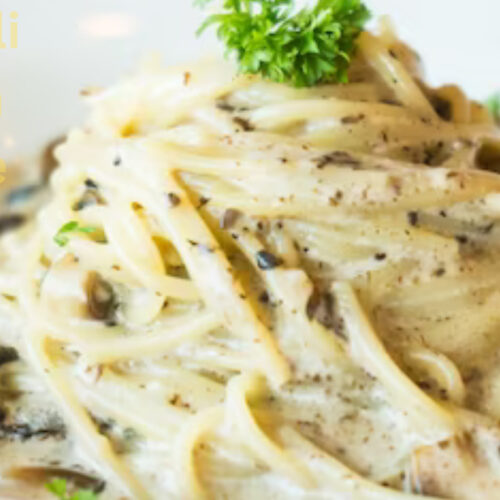
Roscioli Roman Cacio e Pepe Recipe
Equipment
- Large pot
- Skillet or Pan
- Tongs or Pasta Fork
- Grater
- Measuring spoons
- Colander
- Pasta Water Ladle or Cup
- Olive Oil Infuser or Garlic Press
Ingredients
- 400 g 14 ounces of pasta
- 200 g 7 ounces of Pecorino Romano cheese, freshly grated
- 1-2 tablespoons of coarsely floor black pepper
- Extra-virgin olive oil
- Salt for pasta water
Instructions
- Take a large bowl of salted water to a boil.
- Cook the pasta in keeping with the bundle instructions until al dente.
- While the pasta is cooking, warm a drizzle of olive oil in a massive skillet over medium heat.
- Add the coarsely ground black pepper to the skillet and toast it briefly. Be cautious no longer to burn the pepper; it ought to release its aroma without turning bitter.
- Scoop out about 1 cup of pasta cooking water just earlier than draining the pasta.
- Add a small amount of the pasta water to the skillet with the toasted black pepper, developing a peppery infusion.
- Once the pasta is cooked, transfer it directly to the skillet using tongs or a pasta fork. Toss the pasta inside the pepper-infused water, making sure each strand is coated.
- Gradually upload the freshly grated Pecorino Romano to the pasta, tossing constantly to create a creamy and emulsified sauce. Add extra pasta water if needed to obtain the favored consistency.
Nutrition Information
Calories: 400 calories
Protein: 20 grams
Fat: 15 grams
Saturated Fat: 7 grams
Carbohydrates: 40 grams
Dietary Fiber: 3 grams
Cholesterol: 40 milligrams
Sodium: 800 milligrams
What To Serve With roscioli roman cacio e pepe?
Simple Salad
A mild, crisp salad can offer a clean contrast to the richness of the Cacio e Pepe. Consider a traditional Caesar salad with crunchy romaine lettuce, croutons, and a tangy dressing.
Roasted Vegetables
Roasted vegetables, which includes cherry tomatoes, asparagus, or broccoli, can add coloration and a savory element to the meal. Drizzle them with olive oil and season with salt and pepper earlier than roasting.
Grilled Chicken or Shrimp
For a protein increase, serve Cacio e Pepe with grilled chicken or shrimp. The simplicity of the pasta pairs properly with the savory flavors of grilled meats or seafood.
Bread Basket
A basket of crusty Italian bread or a heat baguette is best for sopping up any closing sauce. It also enhances the meal with additional textures.
Antipasto Platter
Create a platter with a collection of Italian antipasti, along with cured meats, olives, marinated artichokes, and cheeses. This adds range and permits for an extra communal dining experience.
Vegetable Side Dishes
Sautéed or grilled zucchini, eggplant, or spinach can be outstanding facet options. Season them with garlic, olive oil, and a squeeze of lemon for a taste.
Bruschetta or Crostini:
Serve classic bruschetta or crostini crowned with sparkling tomatoes, basil, and a drizzle of balsamic glaze. This appetizer complements the Italian flavors of the main dish.
Caprese Salad
Combine fresh tomatoes, mozzarella cheese, and basil in a Caprese salad. Drizzle with balsamic glaze or an amazing extra-virgin olive oil for a clean accompaniment.
White Bean Salad
Prepare a white bean salad with cannellini beans, purple onion, cherry tomatoes, and sparkling herbs. Toss with a light French dressing for a nutritious side.
Fresh Fruit
End the meal on a candy note with a bowl of sparkling seasonal fruit or a platter of sliced melons. The natural sweetness provides a delightful contrast.
How To Store Leftover roscioli roman cacio e pepe recipe?
Storing Leftovers
Separate Components
If possible, separate the pasta from the sauce before storing. This prevents the pasta from becoming overly smooth.
Refrigeration
Store the pasta and sauce in hermetic boxes inside the refrigerator. Pasta can absorb moisture, so preserving it becomes independent from the sauce helps hold its texture.
Label and Date
If you plan to save leftovers for more than an afternoon, label the packing containers with the date to music freshness.
Consume Within 2-three Days
For the fine fine, devour the leftovers within 2-three days.
Reheating Leftovers
Pasta
To reheat pasta, convey a pot of water to a boil. Add the pasta and prepare dinner in short until just heated through. This enables revive the al dente texture.
Sauce
Reheat the sauce one by one in a skillet over low warmness. If it has thickened, you could upload a touch of pasta water or milk to reap the favored consistency.
Combine Before Serving
Once both the pasta and sauce are reheated, combine them simply before serving. Toss the pasta within the warmed sauce till evenly covered.
Conclusion
In the end, whether or not relishing it within the coronary heart of Rome or recreating it in your personal kitchen, Roscioli Roman Cacio e Pepe recipe is a party of simplicity, first-class, and the timeless allure of Italian delicacies. As you embark for your culinary journey, can also every chunk be a homage to the flavors which have graced Roman tables for generations.
other recipes
San Giorgio Stuffed Shells Recipe
Frequently Asked Questions About Roscioli roman cacio e pepe recipe
What makes Roscioli Roman Cacio e Pepe particular?
Roscioli’s model of Cacio e Pepe is widely known for its commitment to using terrific components, which include freshly grated Pecorino Romano and the careful balance of flavors. The dish is a mirrored image of Roscioli’s dedication to maintaining Roman culinary traditions.
Can I use an exclusive kind of cheese for Cacio e Pepe?
While Pecorino Romano is the conventional preference, you may test with different hard, flavorful cheeses. However, preserve in mind that the extraordinary saltiness and sharpness of Pecorino Romano contribute substantially to the dish’s taste.
What form of pasta is first-rate for Cacio e Pepe?
Traditional selections include tonnarelli, spaghetti, or bucatini. These pasta sorts are decided on for his or her capacity to hold and capture the rich sauce.
How do I save you the pasta from becoming delicate while reheating leftovers?
Reheat the pasta briefly in boiling water to preserve its al dente texture. Be cautious now not to overheat, as this could bring about a delicate consistency.
Can I make Cacio e Pepe without black pepper?
While black pepper is a key aspect, you can experiment with variations. Consider the usage of grains of paradise or other pepper alternatives to feature a completely unique twist to the dish.

